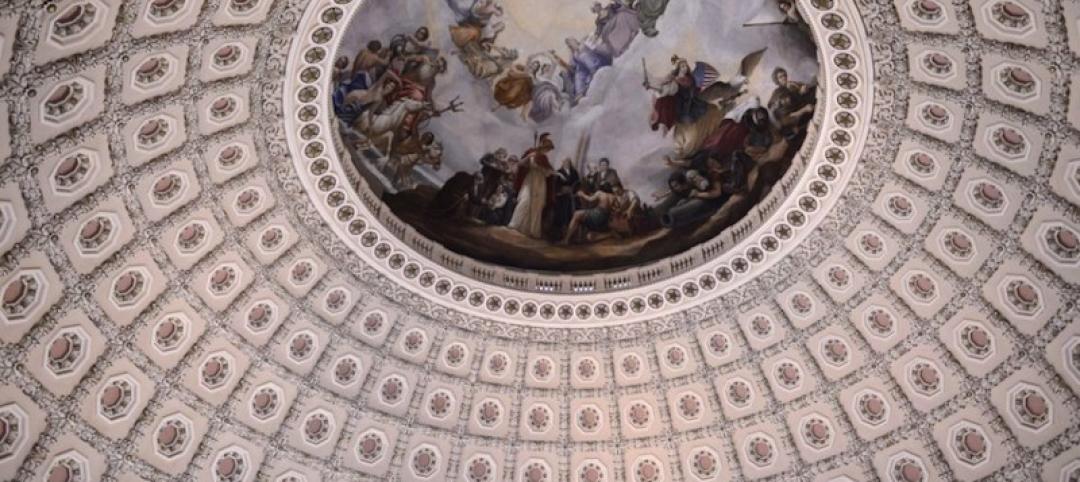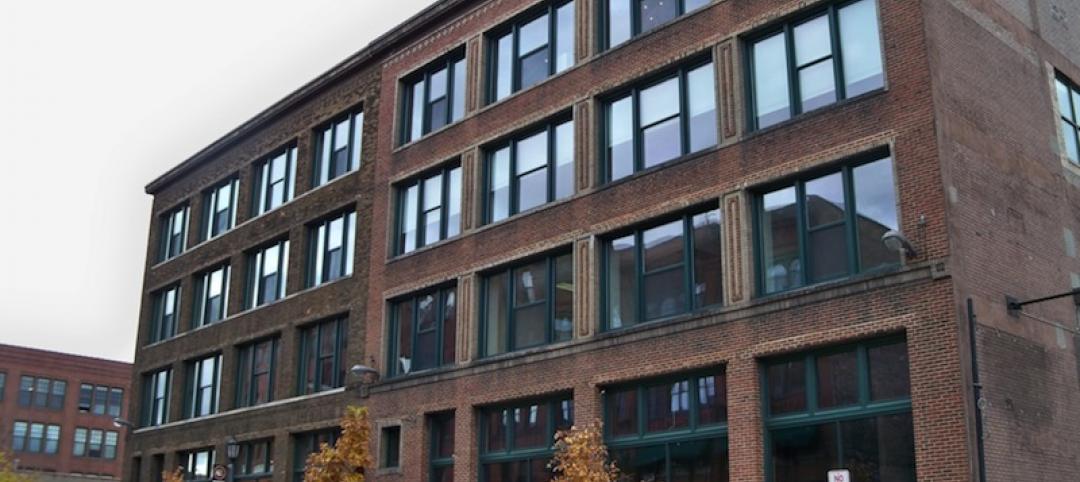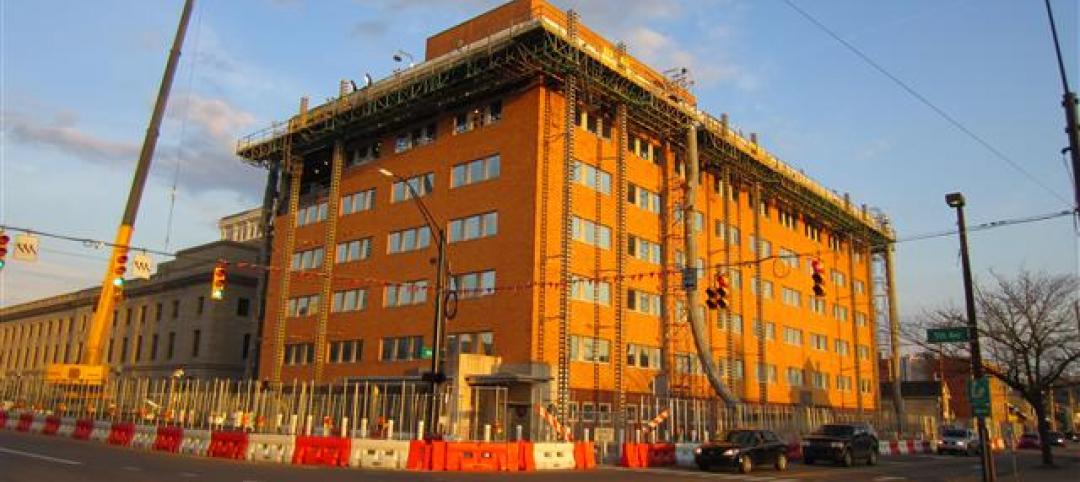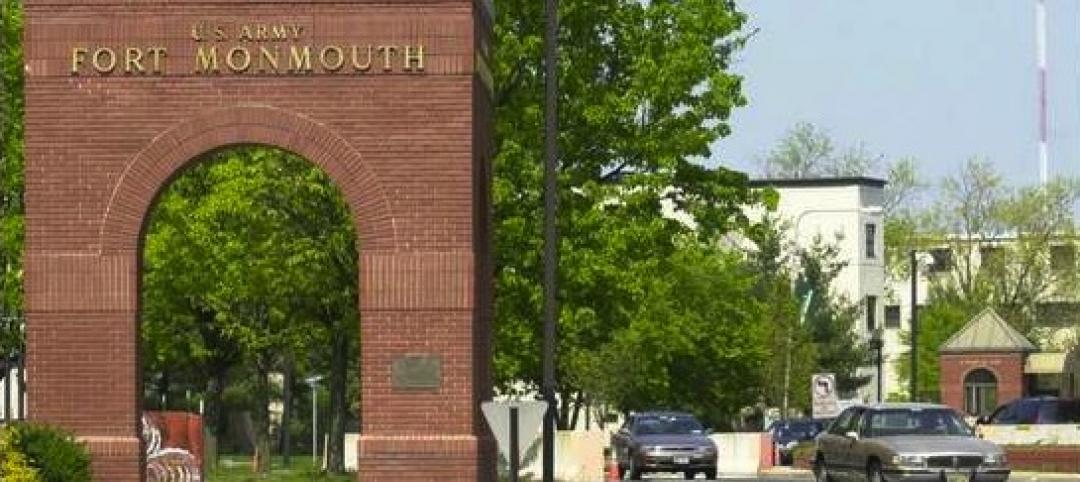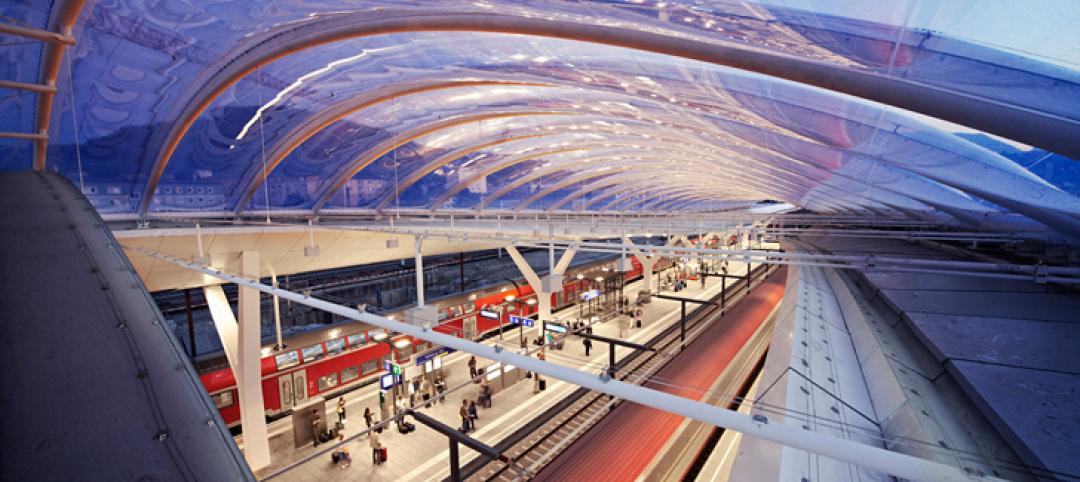For many years, Corrigan Tower, originally designed in 1950 by architect Wyatt C. Hedrick and constructed starting in 1952, provided rentable office space on Elm Street in downtown Dallas. Named for Owner/Developer Leo Corrigan, the building was designed to sit atop the existing Tower Theater, one of the prominent entertainment venues along Elm Street that rivaled the Majestic Theater to the east.
Corrigan had earlier acquired the adjacent Tower Petroleum building, which lacked central air-conditioning. The eventual construction of a mechanical penthouse on the 18th floor and cooling towers on the upper roof level of Corrigan Tower provided air-conditioning for both buildings. This shared mechanical system necessitated the buildings being connected from Level 17 down to the basement.
With the exception of the Majestic, which still survives, the other single-cinema theaters along Elm closed, Tower Theater among them. In the late 1970s, HKS Architects designed a multi-level retail court to occupy the volume of space remaining after the theater’s demolition. This created a contemporary and inviting entrance into Corrigan Tower from Pacific Avenue. The theater’s previous back-of-house area now saw a three-story glass curtain wall looking out onto Pacific. Structural steel framing and decking created mezzanines on levels 2 and 3 that featured multi-tenant spaces with boutiques and restaurants. This access from Pacific eased the traffic through the original entrance doors on St. Paul Street.
For the renovation of this 18-story tower, Andres Construction Services provided infilling for 150 apartments with luxury vinyl plank, large shower/bathtub combinations, and quartz countertops, as well as a 7,450-sf rooftop amenity deck and pool, a 4,220-sf amenity center, a 2,448-sf gym, and ground-floor retail space. The LEED-certified project now operates with up-to-date efficiencies, new windows, and upgraded mechanical systems to enhance resident comfort and reduce energy consumption.

OVERCOMING DIFFICULTY IN CONSTRUCTION
Adaptive reuse projects pose unique challenges to construction. Add to that the duty of historic preservation—the building sits in the Downtown Dallas Historic District, with oversight by the National Park Service—and the difficulties compound quickly.
The replacement punched windows in the dwelling units and common areas and storefront window assemblies along Pacific and St. Paul had to match their predecessors exactly in appearance, design, proportions, profiles, and glass visual qualities. Andres Construction Services hand-sketched each condition, including punched and ribbon windows, to achieve an accurate profile in relation to the masonry.
We compared multiple glass types to ensure the proper match. The corner ribbon window glass had a blue tint, different from the single-punched windows, so we sourced glazed coating to recreate the look. The Park Service had previously approved replacing the original windows with a two-pane, thermally broken insulated assembly that measurably enhanced the thermal and acoustic performance of the windows. Removing the existing windows involved cutting four clips per window and pulling the window pieces inside.

DEMANDING MASONRY WORK
Preparing the masonry openings for a modern six-inch-on-center mechanical fastener receiver system involved recess cutting in millwork blocking, metal sill flashing, peel-and-stick flashing, liquid-applied flashing, and sealant to ensure a long-term and well-preserved historic façade.
The lack of color photographs of the original construction made it difficult to provide a matching masonry coating. Dozens of breathable masonry coating mockups were analyzed to ensure the color and finish appearance coincided with the black-and-white photos the design team used for comparison. Accessing the building façade was made difficult due to the adjacent property’s courtyard and the city pedestrian sidewalks. Erectors built a scaffold system to reach the top of the spire 280 feet above ground level for technicians to point and patch the areas of the existing cast in-place spire structure. Flagpole experts climbed to the top of the pole over 300 feet above ground level to rerig the original flagpole. The building is now finished with appropriate colors, protected from moisture, and illuminated with RGB color-changing LED fixtures.
Preserving the existing elevator lobbies imposed logistical difficulties and in-place construction detailing. Protecting the existing stone veneer on the lobby walls from major demolition, existing interior masonry, and metal frame walls was an everyday task that involved close supervision and temporary protection with insulation board and plywood. Coordinating installation to meet up-to-date codes required fresh air and exhaust air duct. Concealing the duct above the ceilings created a conflicting elevation of the existing elevator hall lanterns. A specialty crew polished the metal and cleaned the hall lantern glass, while an elevator crew replaced the light fixture. An experienced millwork carpenter crafted custom plates to lower each fixture clear of the new ceilings.
The presence of the transfer trusses on the fourth floor challenged design architect Merriman Anderson Architects to harmonize apartment unit layouts marred by inflexible wall locations. Rather than trying to completely hide the trusses into the walls, in some areas the gypsum panels stayed with the truss layout so as to vaguely convey the truss’s profile. The openings in the webs of the trusses make for some unique cased openings and doorways in the apartment corridors and interiors of individual dwelling units. As there is a truss just inside the northern exterior wall of the building, some residual shelf nooks were created at the window openings.
Constructing a self-contained soldier-pile retention system for a three-sided structural concrete subgrade vault for the expansion of the underground power delivery infrastructure proved exceedingly difficult. This corner, at the very busy corner of St Paul Street and Pacific Avenue, is part of a hectic five-way downtown Dallas intersection with scores of other underground utilities
UNUSUAL CONSTRUCTION TECHNIQUES
Sealing existing/connecting stairs with a steel bridge took some doing. Cleaning and sealing rusty old stairs for the distressed yet clean look involved unusually precise amounts of prep time. Our painters were instructed to clean and sand just enough to allow the sealer to adhere, but not too much as to lose the antique or distressed look.
In order to update the stair egress requirements to current code, we built a C-channel, metal decking, and concrete bridge connecting existing stairs from a mid-landing to a new mezzanine structural level between levels 1 and 2. This allowed the existing stair to keep its grandfathered status, and also allowed the existing tread and riser dimensions to be maintained.
Andres Construction also built an Oncor vault to sustain the pressure of a full-height water flood.
DEBUT OF THE FINISHED PRODUCT
Shaker style cabinets, quartz counter tops, and luxury vinyl plank provide a durable finish with an elegant color pallet for 150 apartments. The open concept leasing office and amenity area on level two provides a welcoming environment with built-in seating and counters. Wood decking on the rooftop surrounds an illuminated pool with sunbathing areas and glass railing showcasing a magnificent downtown view.
Units became available for occupancy in July 2018, one month ahead of the contracted completion date. The 1900 Pacific Residences apartment community, developed by John Kirtland, President of 1900 Pacific Holdings, is 97% leased.
Related Stories
| Dec 27, 2013
U.S. Capitol dome’s cracks to be repaired during $60 million renovation
Rings of scaffolding will start to rise this spring around the cast-iron dome of the U.S. Capitol in Washington as part of a $60 million renovation project to repair more than 1,300 cracks.
| Dec 16, 2013
Major renovation for historic Northwestern Building in Minneapolis
Minneapolis’s Northwestern Building, originally built in 1914 as a glass factory, is undergoing a major renovation. The 85,000-sf, four-story building is now serves as office space for multiple tenants in Minneapolis’ North Loop neighborhood.
| Dec 9, 2013
Bethlehem, Pa., receives preservation award for Bethlehem Steel building renovation
Bethlehem, Pa., is a recipient of a 2013 award by Preservation Pennsylvania for a renovation of the oldest building on the former Bethlehem Steel Corp. site.
| Dec 3, 2013
Historic Daytona International Speedway undergoing $400 million facelift
The Daytona International Speedway is zooming ahead on the largest renovation in the Florida venue’s 54-year history. Improvements include five redesigned guest entrances, an extended grandstand with 101,000 new seats, and more than 60 new trackside suites for corporate entertaining.
| Dec 2, 2013
Army Corps of Engineers workers displaced during renovation of federal building in Huntington, W. Va.
A $47.6 million overhaul of the Huntington Federal Building in Huntington, West Virginia, includes altered traffic lanes on adjoining streets and the displacement of some of the more than 500 U.S. Army Corps of Engineers employees who work in the building.
| Nov 27, 2013
Wonder walls: 13 choices for the building envelope
BD+C editors present a roundup of the latest technologies and applications in exterior wall systems, from a tapered metal wall installation in Oklahoma to a textured precast concrete solution in North Carolina.
| Nov 27, 2013
University reconstruction projects: The 5 keys to success
This AIA CES Discovery course discusses the environmental, economic, and market pressures affecting facility planning for universities and colleges, and outlines current approaches to renovations for critical academic spaces.
| Nov 25, 2013
Plans for massive redevelopment of Ft. Monmouth in New Jersey likely to be revised
The redevelopment of Fort Monmouth, a former New Jersey army base, is likely to be revised on a building-by-building and parcel-by-parcel basis, officials say.
| Nov 18, 2013
Office design trends spurring office building renovations in Grand Rapids, Michigan
Key office design trends such as downsizing of overall space, more open floor plans, and the inclusion of more collaborative workspaces are prompting property owners in Grand Rapids, Mich., to renovate thousands of square feet of office space.
| Nov 11, 2013
Reconstruction of historic Salzburg, Austria railroad station took complex planning
Salzburg, Austria’s Central Station remained in operation during reconstruction, a feat that required complex planning.



